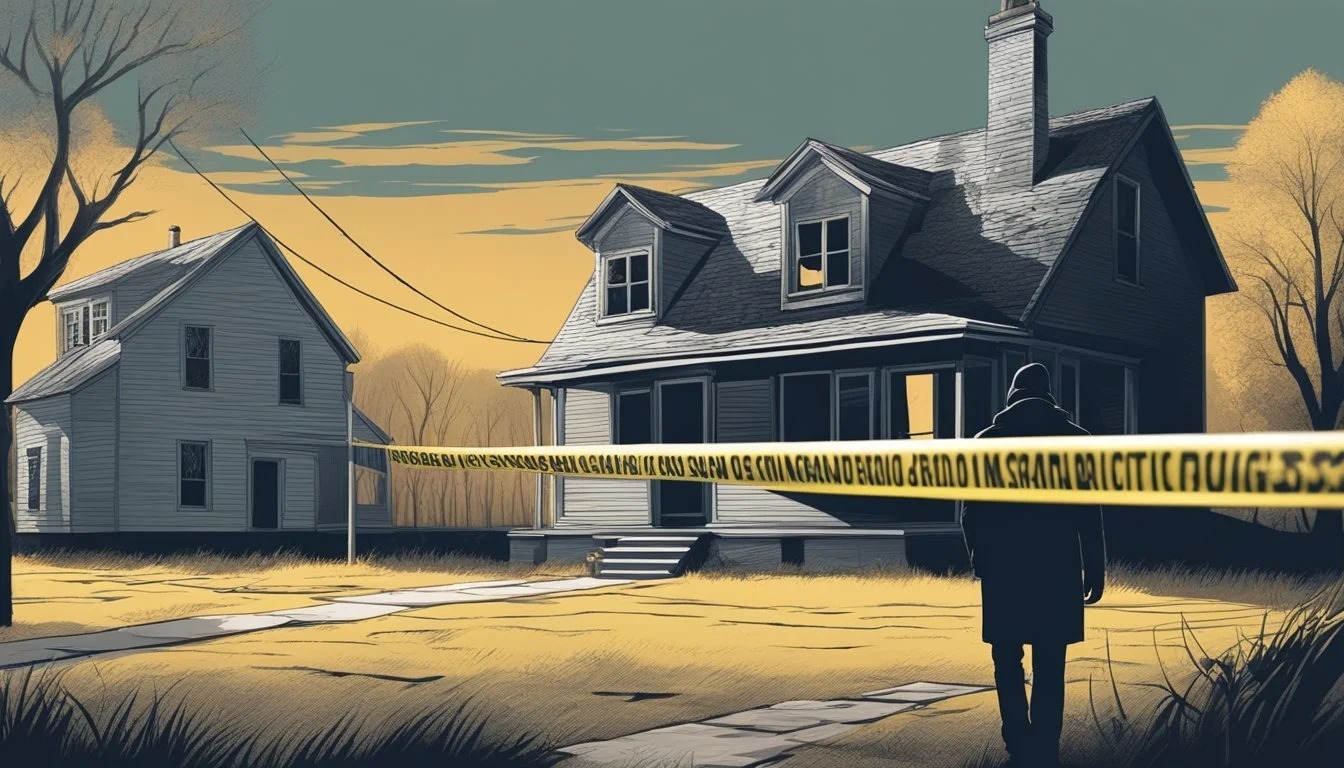Is JonBenét Ramsey Alive? Shocking New Evidence Raises Eyebrows in Cold Case Investigation!
The unsolved murder of JonBenét Ramsey continues to captivate public interest nearly three decades after her tragic death. On December 26, 1996, the 6-year-old beauty pageant contestant was found dead in the basement of her family's home in Boulder, Colorado. Despite numerous theories and investigations, JonBenét Ramsey is not alive today.
The case remains one of America's most infamous cold cases, with no conclusive evidence pointing to a specific perpetrator. Over the years, various suspects have been considered, including family members and outsiders, but no charges have ever been filed. The mystery surrounding JonBenét's death has led to countless documentaries, books, and media speculations.
Recent developments suggest that progress is being made in the investigation. Law enforcement agencies continue to use advanced DNA technology and forensic techniques in their efforts to solve the case. While JonBenét would have been 34 years old in 2025, her life was tragically cut short, leaving behind a legacy of unanswered questions and a family forever changed by the events of that fateful night.
The Tragic Event
On December 26, 1996, a horrific crime shocked the city of Boulder, Colorado. Six-year-old JonBenét Ramsey was found murdered in her family's home, sparking a complex investigation that remains unsolved to this day.
The Ramsey Family
JonBenét Ramsey was born on August 6, 1990, to John and Patsy Ramsey. The family lived in an upscale neighborhood in Boulder, Colorado. John was a successful businessman, while Patsy was a former beauty queen who encouraged JonBenét's participation in child beauty pageants.
The Ramseys also had an older son, Burke, who was nine years old at the time of the incident. They were considered a prominent family in their community, known for their wealth and social status.
Discovery of JonBenét
In the early hours of December 26, 1996, Patsy Ramsey claimed she found a ransom note demanding $118,000 for JonBenét's safe return. She immediately called the police to report her daughter missing.
Hours later, John Ramsey discovered JonBenét's body in the basement of their home. The young girl had been strangled with a garrote and suffered a skull fracture. The crime scene was contaminated due to the presence of family friends and police officers who had been searching the house.
The ransom note, found to be written on paper from the Ramsey home, became a crucial piece of evidence. Its unusual length and content raised suspicions among investigators.
Initial Investigations
The initial investigations into JonBenét Ramsey's disappearance and death were marked by crucial early decisions and evidence collection efforts. These first steps would shape the course of the lengthy investigation that followed.
The Ransom Note Analysis
Boulder Police found a lengthy ransom note at the Ramsey home on December 26, 1996. Investigators focused intensely on analyzing the handwriting, paper, and content of the note. Experts examined the unusual $118,000 ransom demand, which matched John Ramsey's recent bonus amount.
Handwriting samples were collected from the Ramseys and compared to the note. While Patsy Ramsey could not be definitively excluded as the author, no conclusive match was made. The note's unusual length and details raised suspicions about its authenticity as a genuine kidnapping demand.
Early Evidence Collection
Boulder Police faced criticism for their handling of the crime scene in the crucial early hours. The house was not immediately sealed off as a crime scene. Friends and family were allowed to move freely through the home, potentially contaminating evidence.
Key pieces of evidence collected included:
Fibers and DNA from JonBenét's clothing
The cord and duct tape used on her body
A basement window with a broken pane
Investigators also noted the lack of footprints in the snow around the house. This absence conflicted with the kidnapping scenario presented in the ransom note. The autopsy revealed head trauma and strangulation as causes of death.
Ongoing Case Developments
Recent advances in forensic science and renewed public interest have led to new developments in the JonBenét Ramsey case. Investigators are exploring cutting-edge technologies and managing intense media scrutiny as they pursue leads.
Introduction of New Technologies in DNA
Advanced DNA testing methods have opened up new avenues for investigation. Touch DNA analysis allows for the detection of genetic material from skin cells left on evidence. Forensic experts are re-examining items from the crime scene using this technique.
Genetic genealogy has emerged as a powerful tool in cold cases. Investigators are considering its application to the Ramsey case. This method could potentially identify distant relatives of unknown DNA contributors.
The District Attorney's office has authorized the use of these new technologies. They hope to generate fresh leads and identify potential suspects who may have been overlooked previously.
Impact of Media Frenzy
The case continues to attract significant media attention. News outlets regularly report on developments, keeping public interest high. This sustained coverage has both helped and hindered the investigation.
Public pressure has led to increased resources for the cold case review. The Boulder Police Department has assigned dedicated detectives to re-examine evidence.
However, the media frenzy has also complicated efforts. False confessions and unreliable tips have diverted investigative resources. Separating fact from speculation remains a challenge for law enforcement.
Social media discussions have generated new theories and perspectives. While some of these have proved valuable, others have spread misinformation. Investigators must carefully sift through public input to identify credible leads.
Ramsey Family Scrutiny
The Ramsey family faced intense public and media scrutiny following JonBenét's death. This scrutiny manifested in widespread speculation and numerous interviews and books about the case.
Public and Media Speculation
John, Patsy, and Burke Ramsey became the focus of intense speculation. The media frenzy surrounding the case put the family under a microscope. Many questioned their behavior and statements in the aftermath of JonBenét's death.
Some media outlets and armchair detectives pointed fingers at family members as potential suspects. This speculation led to significant stress and legal challenges for the Ramseys.
In 2016, a CBS documentary series implied Burke Ramsey's involvement in his sister's death. This led to Burke filing a $750 million defamation lawsuit against the network.
Subsequent Interviews and Books
The Ramsey family participated in numerous interviews over the years. These appearances aimed to clear their names and push for continued investigation into JonBenét's murder.
John and Patsy Ramsey co-authored the book "The Death of Innocence" in 2000. It detailed their perspective on the case and its impact on their lives.
In 2021, a Netflix docuseries by Joe Berlinger revisited the case. It featured interviews with John Andrew Ramsey, JonBenét's half-brother, who advocated for new DNA testing techniques to be used in the investigation.
John Ramsey continues to speak out about the case. He has called for the release of case files and the use of advanced forensic technology to solve his daughter's murder.
Legal Proceedings and Grand Jury
The JonBenét Ramsey case involved complex legal proceedings, including a grand jury investigation and actions by the Boulder County District Attorney's Office. These events shaped the course of the investigation and public perception of the case.
Grand Jury Indictment and Aftermath
In 1998, a grand jury convened to review evidence in JonBenét Ramsey's murder case. After 13 months of deliberation, the jury voted to indict John and Patsy Ramsey for child abuse resulting in death.
However, the indictment remained secret for years. The district attorney at the time, Alex Hunter, declined to sign the indictment, citing insufficient evidence to secure a conviction.
In 2013, a judge ordered the partial release of the grand jury indictment. This revelation sparked renewed interest in the case and raised questions about the decision not to prosecute.
Actions Taken by the District Attorney
The Boulder County District Attorney's Office played a crucial role in the case's trajectory. In 2008, then-District Attorney Mary Lacy issued a letter exonerating the Ramsey family based on DNA evidence.
This decision was controversial, with some experts questioning the validity of the DNA analysis. John Andrew Ramsey, JonBenét's half-brother, has been vocal in calling for further investigation and the use of advanced DNA testing techniques.
The District Attorney's Office has faced criticism for its handling of the case. Some argue that potential leads were not thoroughly pursued, while others defend the office's decisions given the complex nature of the evidence.
Profile of JonBenét
JonBenét Ramsey was a young beauty pageant contestant whose life and tragic death captured national attention. Her involvement in child beauty pageants and public image were key aspects of her short life.
JonBenét's Life and Pageantry
JonBenét Patricia Ramsey was born on August 6, 1990, in Atlanta, Georgia. She lived with her family in Boulder, Colorado, where she gained recognition as a child beauty queen.
At just 6 years old, JonBenét had already won several pageant titles, including Little Miss Colorado and National Tiny Miss Beauty. She participated in various beauty contests, showcasing her talents in singing, dancing, and modeling.
JonBenét's pageant performances often featured elaborate costumes, makeup, and hairstyles. Her participation in these events sparked debates about the appropriateness of child beauty pageants.
Public Image and Perception
As a child beauty queen, JonBenét's image was widely circulated in the media. Photos of her in pageant attire and makeup became iconic, contributing to public fascination with her case.
The portrayal of JonBenét in the media led to discussions about the sexualization of young girls in beauty pageants. Some criticized the pageant culture for promoting unrealistic beauty standards for children.
JonBenét's public image was complex, with some viewing her as a symbol of innocence, while others saw her as a representation of controversial aspects of child beauty pageants.
Her tragic murder at age 6 further complicated public perception, as the case remained unsolved and continued to generate interest and speculation for decades.
Review of Potential Theories
Multiple theories have emerged in the JonBenét Ramsey case, attempting to explain the circumstances surrounding her death. Two prominent theories have been extensively investigated and debated over the years.
Intruder Theory
The intruder theory suggests an unknown person entered the Ramsey home and committed the crime. Proponents point to evidence of possible forced entry and unidentified DNA found on JonBenét's clothing.
Some investigators believe a pedophile may have targeted the young beauty pageant contestant. This theory aligns with the ransom note found at the scene, which could have been an attempt to misdirect the investigation.
The Boulder police initially focused on this possibility, conducting extensive searches of the neighborhood and interviewing potential suspects. However, no conclusive evidence has been found to support this theory.
Family Member Involvement Theory
Another theory focuses on the potential involvement of JonBenét's family members. Suspicion initially fell on her parents, John and Patsy Ramsey, due to inconsistencies in their statements and behavior.
Some investigators questioned Patsy Ramsey's involvement, citing similarities between her handwriting and the ransom note. The family's wealth and JonBenét's pageant participation also fueled speculation about possible motives.
JonBenét's brother Burke, who was nine at the time, has also been subject to scrutiny. However, DNA evidence and alibis have largely exonerated immediate family members from direct involvement in her death.
This theory remains controversial, with supporters and critics debating its merits. The case remains unsolved, classified as a cold case by Boulder authorities.
Advancements and Future of the Investigation
Recent developments in forensic technology and renewed public interest have breathed new life into the JonBenét Ramsey case. Investigators are exploring cutting-edge methods to uncover crucial evidence that may finally solve this decades-old mystery.
The Role of Genetic Genealogy
Genetic genealogy has emerged as a powerful tool in cold case investigations. This technique combines DNA analysis with traditional genealogical research to identify potential suspects or relatives. In the Ramsey case, investigators are considering applying this method to the limited DNA samples collected from the crime scene.
The Colorado Cold Case Review Team is evaluating the potential of genetic genealogy to generate new leads. This approach has successfully solved other long-standing cases and could prove invaluable in identifying the perpetrator or their relatives.
New Leads and Persons of Interest
Advancements in DNA technology have allowed investigators to reexamine existing evidence with greater precision. The Boulder Police Department is working to extract more genetic material from items found at the crime scene, hoping to build a more complete DNA profile.
Detectives are also revisiting witness statements and conducting new interviews based on fresh insights. These efforts have led to the identification of several persons of interest who were not previously considered in the investigation.
The homicide investigation team is utilizing advanced data analysis tools to cross-reference information and identify patterns that may have been overlooked in earlier stages of the case.
Impact on Society and True Crime Genre
The JonBenét Ramsey case profoundly influenced public perceptions of child safety and law enforcement. It sparked a surge in true crime media, shaping how such cases are covered and consumed.
Public Interest and True Crime Productions
The Ramsey case captivated the public, fueling a boom in true crime content. Numerous books, documentaries, and podcasts have explored the unsolved murder. TV specials and docuseries continue to examine the case decades later.
This intense media coverage has kept the case in the spotlight, attracting new generations of true crime enthusiasts. The mystery surrounding JonBenét's death has become a cultural touchstone, referenced in popular culture and studied in criminology courses.
The case also highlighted issues of child exploitation, leading to debates about the ethics of child beauty pageants.
The Ethical Considerations of Case Publicity
The extensive publicity surrounding the Ramsey case raised ethical questions about media coverage of crimes involving children. Critics argue that the sensationalized reporting may have compromised the investigation and violated the family's privacy.
The case sparked discussions about responsible journalism and the potential impact of media coverage on ongoing investigations. It also prompted debates about the public's right to information versus the need to protect victims and their families.
Law enforcement agencies and media outlets have since reevaluated their approaches to handling high-profile cases involving minors, seeking a balance between public interest and ethical considerations.










